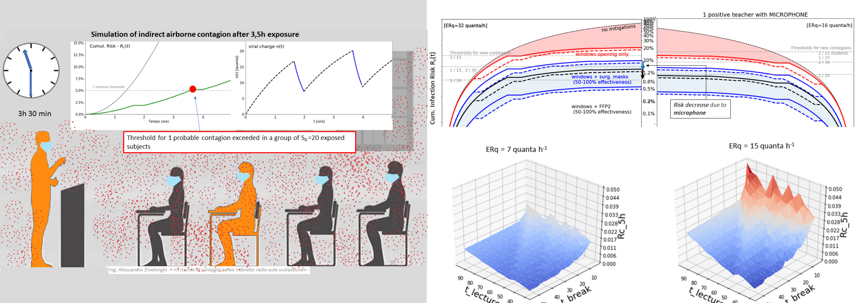© Copyright 2021 Powerconsulting - Eng. Alessandro Zivelonghi - tax code/VAT 04306540230 contact email: ing.zivelonghi@gmail.com
Press articles - ventilation and contagion risk theme
Italian press
2021
Corriere della Sera - Covid, vaccines and ventilation in schools
Corriere della Sera - Covid, how to (really) manage safety in indoor environments
2020
Corriere Special - What are the risks of Coronavirus infection at school ?
Corriere della Sera - Coronavirus, Germany improves ventilation to drive out Covid
Stampa internazionale - International press
2021
El Pais - El caso de los 12 ninos contagiados de covid por su profesora
2020
M.Gilraine - The importance of clean air in classrooms during pandemics and beyond
El Pais - A room, a bar and a classroom: how the coronavirus is spread through the air
Scientific literature on "Aerosol Infection Risk"

Selection of Peer-Reviewed Scientific Articles (in English)
2021
D.Lewis - Why indoor spaces are still prime COVID hotspots, Nature, March 2021
J.E. Castellini et al. - Assessing the use of portable air cleaners for reducing exposure to airborne diseases in a conference room with thermal stratification Building and Environment October 2021, 108441
A.Zivelonghi, M.Lai - Mitigating aerosol infection risk in school buildings: the role of natural ventilation, volume, occupancy and CO2 monitoring Building and Environment 204 (2021) 108139
L. Stabile et al. - Ventilation procedures to minimize the airborne transmission of viruses in classrooms Building and Environment (2021), 108042
2020
Rosti et al. - Fluid dynamics of COVID-19 airborne infection Nature Scientific Reports volume 10, Article number: 22426 (2020)
L. Morawska et al. How can airborne transmission of COVID-19 indoors be minimised?, Env. Int. Volume 142, September 2020, 105832
G.Buonanno, L. Stabile, L.Morawska Estimation of airborne viral emission: Quanta emission rate of SARS-CoV-2 for infection risk assessment, Env. Int. Volume 141, August 2020, 105794
Scientific literature (in Italian)
2021
L. Moccia - COVID-19 Risk via Aerosol in Schools: Bibliographic Notes, Examples of Interventions, and Their Sizing
F.Busato, A.Cavallini - Theoretical approach to air exchange in Italian schools: energy aspects, air quality and risk assessment of Sars-CoV-2 infection Part 1
2020
A. Zivelonghi - Mitigating the risk of indirect airborne contagion in school classrooms
© Copyright 2021 Powerconsulting - Eng. Alessandro Zivelonghi - tax code/VAT 04306540230 contact email: ing.zivelonghi@gmail.com